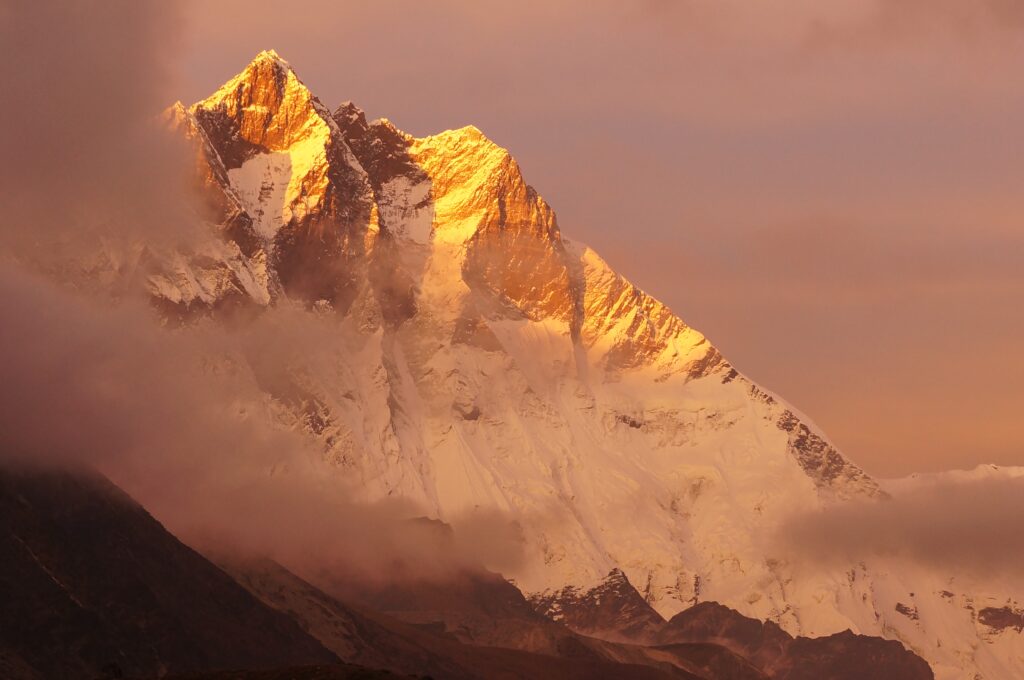
introduction
Extreme tourism is a form of travel that goes beyond traditional destinations and seeks to challenge the individual's physical and mental limits. It's an intrepid journey to inhospitable places, where wild nature reigns and comfort is left behind. While conventional tourism can be relaxing and contemplative, extreme tourism is an intense adventure that involves calculated risks and intense emotions.
Definition of extreme tourism
Extreme tourism can be defined as the practice of engaging in travel activities that require courage, special skills, and a willingness to face imminent danger. Unlike conventional tourism, which primarily seeks entertainment and recreation, extreme tourism involves overcoming physical or psychological obstacles in hostile environments. This includes exploring steep mountains, diving to unknown depths, or facing severe weather conditions.
The appeal of extreme tourism: pushing boundaries and exploring inhospitable places
The appeal of extreme tourism has been attracting more and more adventurers, adrenaline lovers, and nature lovers. This form of tourism offers experiences Unique and challenging, allowing travelers to step out of their comfort zone and explore inhospitable and remote places. There are several reasons why extreme tourism captivates so many people:
- Adrenaline and emotion: For many, the search for intense emotions and the feeling of pushing physical and mental limits is the main appeal of extreme tourism. Activities such as mountain climbing steep slopes, underwater cave diving or skydiving provide an adrenaline rush and unparalleled excitement.
- Connection with nature: Extreme tourism often takes travelers to remote, wild locations where nature is at its purest. These experiences provide a deep connection with the environment and an appreciation for the beauty and diversity of wildlife and exotic landscapes.
- Personal challenge: Extreme tourism offers the opportunity to face significant challenges, both physical and mental. Overcoming obstacles and achieving difficult goals can bring travelers a sense of accomplishment and self-confidence.
- Unique experiences: Inhospitable places, such as glaciers, deserts, volcanoes, and dense forests, are often only accessible through extreme tourism. The opportunity to explore these little-visited areas and discover rare landscapes and ecosystems is a powerful attraction.
- Break from routine: For many people, extreme tourism is a way to escape the daily grind and hectic city life. Immersion in nature and extreme adventures allows a distance from everyday worries and a feeling of freedom.
- Camaraderie and community: Extreme tourism often brings together people with similar interests and goals. Socializing with other adventurers creates a sense of camaraderie and a community united by shared challenges.
However, it's essential to remember that extreme tourism involves significant risks and must be practiced responsibly. Proper preparation, the accompaniment of experienced guides, and adherence to safety regulations are essential to ensuring physical integrity and environmental preservation.
For those seeking unusual experiences, the appeal of extreme tourism is irresistible, providing exciting and unforgettable adventures in unexplored and challenging places.
The appeal of extreme tourism lies in the human desire to overcome challenges and discover new horizons. For many fearless adventurers, unexplored landscapes are an irresistible calling. The feeling of escaping the daily grind and experiencing something truly unique is incomparable.
Furthermore, confronting nature in its wildest form provides a profound connection with our primal instincts and leads us to question our own existence. By pushing boundaries, extreme tourism also allows travelers to test their own physical and mental limits.
Overcoming fears and achieving personal goals brings an unparalleled sense of accomplishment and confidence. Furthermore, by exploring inhospitable places, travelers have the opportunity to learn about ancient cultures, unique ecosystems, and the importance of environmental preservation.
In short, extreme tourism offers a transformative experience for those willing to venture into the most remote corners of the world. Through this type of courageous travel, travelers can discover their true potential while exploring places few others have the courage or opportunity to go.

Overview of extreme tourism
Extreme tourism is a form of travel that attracts fearless adventurers seeking thrilling and challenging experiences. This type of tourism goes beyond simple relaxation and contemplation, involving activities that test participants' physical and psychological limits. The allure of extreme tourism lies in the unique sensation of overcoming obstacles, exploring inhospitable places, and experiencing intense moments.
Mountaineering on unexplored peaks
Mountaineering on unexplored peaks is one of the main activities of extreme tourism. Those who embark on this journey defy gravity and face adverse weather conditions to reach impressive heights.
From the majestic peaks of the Himalayas to the enigmatic mountains of Patagonia, these courageous explorers seek to conquer new challenges. Climbing an unexplored peak requires not only advanced technical skills, but also physical endurance, the ability to make decisions under pressure, and teamwork.
Deep underwater cave diving
For deep-sea enthusiasts, diving in deep underwater caves offers a unique and intriguing experience. Exploring these mysterious environments requires courage, specialized training, and the right equipment. Underwater caves are filled with impressive rock formations, exotic marine life, and hidden secrets.
Divers have the opportunity to explore narrow passages, swim in crystal-clear waters, and witness the beauty that lies within the ocean's depths. However, this activity is reserved for the most experienced and skilled divers, as the risks are significant and preparation is crucial to ensure safety.

Skydiving in remote and challenging locations
Skydiving in remote and challenging locations is one of the activities that provides an extreme adrenaline rush. Jumping from a plane or helicopter in places like mountains, deserts, or remote islands offers a unique and thrilling perspective on the world. The feeling of freedom as you fall through the open sky is incomparable.
Additionally, experienced skydivers can challenge themselves further by performing acrobatic maneuvers in the air. This activity requires rigorous training, extreme attention to detail, and a fearless spirit to overcome personal fears and limitations.
Popular destinations for extreme tourism
Dangerous and challenging mountains around the world
Those seeking the ultimate challenge in extreme tourism often venture to dangerous and challenging mountains around the world. These magnificent peaks offer breathtaking scenery, but also require technical skills, physical endurance, and unwavering courage. Among the most notable mountains are:
K2, the second highest mountain in the world, in Pakistan/China
K2, also known as Chogori or Mount Godwin-Austen, is the second-highest mountain in the world, located on the border between Pakistan and China in the Karakoram region. This majestic mountain is one of the most feared and respected challenges for climbers worldwide.
Here is some information about K2:
- Altitude: K2 reaches an impressive 8,611 meters above sea level, surpassed only by Mount Everest in Nepal.
- Danger and Difficulty: Climbing K2 is extremely challenging and dangerous. Its steep incline, unpredictable weather conditions, and unstable seracing (ice floes) make it much more difficult to conquer than Everest.
- First ascent: K2 was first climbed on July 31, 1954, by an Italian team led by Ardito Desio. This expedition marked a significant milestone in the history of mountaineering.
- Nickname “Savage Mountain”: K2 is also known as “Savage Mountain” due to its unpredictable and treacherous nature, which represents a true test of skill and endurance for climbers.
- Cultural significance: K2 is a sacred mountain for local populations, including the Baltis of Pakistan and the Uyghurs of China. It is considered a spiritual place with associated legends and stories.
- Remote Access: Access to K2 is typically via a demanding and long trek through the Baltoro Highlands of Pakistan. This journey to the mountain's base camp can take several weeks.
- Modern Challenges: Today, despite technological advances, K2 remains one of the greatest challenges for climbers. Expeditions face significant risks, and the success rate is lower compared to other, higher mountains.
Mount Everest, the highest mountain in the world, in Nepal/Tibet
Mount Everest, known as Sagarmatha in Nepal and Chomolungma in Tibet, is the highest mountain in the world, located in the Himalayas, on the border between Nepal and Tibet (an autonomous region of China). This imposing mountain has long been an icon for climbers and a symbol of challenge and achievement.
Here is some information about Mount Everest:
- Altitude: Everest reaches an impressive height of 8,848 meters above sea level, making it the highest point on Earth.
- First ascent: Mount Everest was first climbed on May 29, 1953, by a British expedition led by Sir Edmund Hillary of New Zealand and Tenzing Norgay, a Nepalese mountaineer of Sherpa origin.
- Location and border: The mountain is located in the Khumbu region of Nepal and is also part of the Tibet autonomous region of China.
- Climbing Challenges: Climbing Everest is an extremely challenging and dangerous feat. The climb involves facing severe weather conditions, a lack of oxygen at extreme altitudes, dangerous crevasses, and seracons (unstable ice floes).
- Increasing number of ascents: In recent decades, the number of people attempting to climb Everest has increased considerably, resulting in a greater number of successful ascents, but also in issues related to overcrowding and environmental impact.
- Cultural significance: For the Sherpa people of Nepal, the mountain is considered sacred and has a cultural significance deep. Everest is also an important source of livelihood for many local communities through mountain tourism.
- Unique Ecosystems: The region around Everest is home to a wide variety of ecosystems, ranging from subtropical forests to glaciers, making it an area rich in biodiversity.
- The Overcrowding Challenge: In recent years, Everest has faced overcrowding issues, particularly during the spring climbing season. This has led to concerns about safety, environmental impact, and controversy over the regulation of the number of climbing permits granted.
Mount Everest is one of the most iconic and emblematic mountains in the world, attracting climbers, adventurers, and mountaineering enthusiasts from all over. However, climbing Everest requires physical and mental preparation, as well as being undertaken responsibly and with respect for the environment and the local communities that inhabit the region. Still, for many, reaching the summit of Everest represents the fulfillment of a dream and a true test of courage and determination.
Cerro Torre, an iconic mountain in Patagonia
Cerro Torre is an iconic mountain located in the Patagonia region, on the border between Argentina and Chile. This majestic mountain is considered one of the most challenging and beautiful in the world, attracting climbers and mountaineering enthusiasts from all over.
Here is some information about Cerro Torre:
- Altitude: Cerro Torre reaches an altitude of approximately 3,128 meters above sea level, making it a significantly lower mountain than Everest or K2, but equally challenging due to its extreme weather conditions and unique prominence.
- Location: The mountain is located in the National park Los Glaciares, in Argentina, near the city of El Chaltén, and is part of the Andes Mountains.
- Impressive Rock Formation: Cerro Torre is known for its remarkable pyramidal rock formation, with a vertical granite wall that presents a significant challenge for climbers.
- Controversial First Ascent: The first ascent to the summit of Cerro Torre was made on January 31, 1959, by a team led by Italian climber Cesare Maestri. However, their claim was the subject of controversy and debate within the climbing community, and the unproven climb remained a source of debate for many years.
- Unpredictable Weather: The weather in the Patagonia region is known for being extremely unpredictable and volatile, which makes climbing Cerro Torre even more challenging and risky.
- Scenic Beauty: Beyond the challenge for climbers, Cerro Torre is renowned for its stunning scenic beauty. The mountain is surrounded by spectacular glaciers, crystal-clear lakes, and breathtaking landscapes, making it an attractive destination for trekking and photography enthusiasts.
- Environmental impact: Due to its ecological importance and natural beauty, the Cerro Torre region is protected by National park Los Glaciares, with ongoing efforts to preserve this unique ecosystem.
Cerro Torre represents a challenge and a lifelong goal for many experienced climbers and mountaineers. Its beauty and imposing character continue to attract adventurers seeking to push personal limits and test their skills in Patagonia's spectacular natural environment. However, it's important to remember that climbing Cerro Torre requires preparation, experience, and respect for nature and local communities, thus ensuring a safe and responsible mountaineering practice.
Conclusion
Extreme tourism in inhospitable places offers intrepid adventurers a unique opportunity to explore human limits and witness unparalleled natural wonders. Dangerous mountains around the world provide the most challenging environments for those seeking to overcome impossible physical and mental obstacles. From K2 to Everest to iconic Patagonian peaks like Cerro Torre, these destinations are reserved for the most courageous and skilled climbers.
However, it's important to emphasize that extreme tourism is not an activity to be taken lightly. It requires rigorous training, adequate equipment, and a thorough understanding of the risks involved.
Practitioners should always prioritize safety and environmental preservation, minimizing their impact on the places they visit. Ultimately, extreme tourism provides unparalleled experiences that challenge human physical and mental limits, allowing adventurers to experience the grandeur of nature in all its magnificence.
Lucas Wanderlust has a tireless spirit of adventure, always seeking new travel experiences. Fascinated by the world and the possibility of exploring unknown destinations, he fell in love with the sense of freedom and self-discovery that traveling alone provides. With a backpack on his back and a heart open to the unknown, Lucas embarks on exciting journeys, where each destination becomes a unique chapter in his life story. He gives himself body and soul to the magic of solo travel, inspiring others to follow in his footsteps and discover themselves through adventure.







